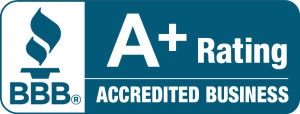5 Ways to Lower Your Federal Income Tax Burden
No one wants to pay more in federal taxes than they have to.
It’s as simple as that. Here are five strategies you should consider to keep more of your income during tax time.
1. Postpone Your Income to Minimize Your Current Income Tax Liability
By deferring (postponing) income to a later year, you may be able to minimize your current income tax liability and invest the money that you’d otherwise use to pay income taxes. This is especially true if when you eventually report the income, you’ll be in a lower income tax bracket.
Certain retirement plans can help you postpone the payment of taxes on your earned income.
With a traditional 401(k) plan, for example, you contribute part of your salary into the plan, paying income tax only when you later withdraw money from the plan (withdrawals before age 59½ may be subject to a 10 percent penalty tax in addition to regular income tax unless an exception applies).
This allows you to postpone tax on part of your salary and take advantage of the tax-deferred growth of any investment earnings.
But there are many other ways to postpone your taxable income. For instance, you can contribute to a traditional IRA, buy permanent life insurance (the cash value part grows tax deferred), or invest in certain savings bonds.
You may want to speak with a tax professional as you explore more complex options.
2. Shift Income to Family Members to Lower the Overall Family Tax Burden
If you have a family member in a lower tax bracket, you may be able to minimize your federal income taxes by shifting some income to them.
For example, if you own stock that produces dividend income, one option might be to gift the stock to your children. After you’ve made the gift, the dividends will represent income to them rather than to you, potentially lowering your family’s overall tax burden.
Keep in mind that you can make a tax-free gift of up to $17,000 (in 2023, $16,000 in 2022, and could increase in future years) per year per recipient without incurring federal gift tax.
However, look out for the kiddie tax rules. Under these rules, for children under age 18, or children under age 19 (or full-time students under age 24) who don’t earn more than one-half of their financial support, any unearned income over $2,500 (in 2023, $2,300 in 2022) is taxed at the parent’s tax rates.
Also, be sure to check the laws of your state before giving securities to minors.
Other ways of shifting income include hiring a family member for the family business and creating a family limited partnership. Be sure to investigate all of your options carefully before you decide.
3. Plan Deductions and Control Your Income
This strategy is about taking advantage of all deductions to which you are entitled and timing them most beneficially.
As a starting point, decide whether to itemize your deductions or take the standard deduction. Generally, you’ll choose whichever method lowers your taxes the most.
If you itemize, be aware that some deductions (for example, medical expenses) are allowed only to the extent the deduction exceeds some percentage of your adjusted gross income (AGI).
In cases where your deductions are affected by your AGI, you might look at ways to potentially increase your allowable deductions by reducing your AGI.
To lower your AGI for the year, you can defer part of your income to next year, buy investments that generate tax-exempt income, and contribute as much as you can to qualified retirement plans.
Because you can sometimes control whether a deductible expense falls into the current tax year or the next, you may have some control over the timing of your deduction.
If you’re in a higher federal income tax bracket this year than you expect to be in next year, consider accelerating deductions into the current year. You can accelerate deductions by paying deductible expenses and making charitable contributions this year instead of waiting until next.
4. Use Timing Strategies and Focus on Your After-Tax Return
Minimize taxes by making tax-conscious investment choices. Potential strategies can include the use of tax-exempt securities and intentionally timing the sale of capital assets for maximum tax benefit.
Although income is generally taxable, certain investments generate income that’s exempt from tax at the federal or state level.
For example, if you meet specific requirements and income limits, the interest on certain Series EE bonds (these may also be called Patriot bonds) used for education may be exempt from federal, state, and local income taxes.
Also, you can exclude the interest on certain municipal bonds from your income (tax-exempt status applies to income generated from the bond; a capital gain or loss realized on the sale of a municipal bond is treated like a gain or loss from any other bond for federal tax purposes).
And if you earn interest on tax-exempt bonds issued in your home state, the interest will generally be exempt from state and local tax as well.
Keep in mind that although the interest on municipal bonds is generally tax-exempt, certain municipal bond income may be subject to the federal alternative minimum tax. Always focus on those choices that maximize your after-tax return when comparing your options.
Usually, long-term capital gain tax rates are lower than ordinary income tax rates. That means that the amount of time you hold an asset before selling it can make a big tax difference.
Since long-term capital gain rates generally apply when an asset has been held for more than a year, you may find it makes good tax sense to hold off a little longer on selling an asset that you’ve held for only 11 months.
Timing the sale of a capital asset (such as stock) can help in other ways as well. For example, if you expect to be in a lower income tax bracket next year, you might consider waiting until then to sell your stock. You might want to accelerate income this year by selling assets, though if you have capital losses this year that you can use to offset the resulting gain.
Always remember this though: You should not decide which investment options are appropriate for you based on tax considerations alone. Nor should you decide when (or if) to sell an asset solely based on the tax consequence. A financial or tax professional can help you decide.
5. Year-End Planning Focuses on Your Marginal Income Tax Bracket
Year-end tax planning typically takes place in October, November, and December. It generally looks at ways to time income and deductions to give you the best possible tax result.
This may mean trying to postpone income to the following year (thus postponing the payment of tax on that income) and accelerating deductions into the current year.
For example, assume it’s December and you know that you’re in a higher tax bracket this year than you will be in next year. If you’re able to postpone the receipt of income until the following year, you may be able to pay less overall tax on that income.
Similarly, if you have major dental work scheduled for the beginning of next year, you might consider trying to reschedule for December to take advantage of the deduction this year. The right year-end tax planning moves for you will depend on your circumstances.
Conclusion
Variations of these five approaches can help you save income during tax season. The best strategy for you depends on the intricacies of your particular situation. Sometimes, it helps to have a professional explore the tools available and fashion the best one.
As experienced financial professionals, we help clients like you figure out the best strategy for their situation so that they protect their hard-earned income during tax season and come away with peace of mind.
Please connect with us and let us help you solidify your financial life. We would be delighted to go on the journey with you.










